ID:173 Medical and Public Health Preparedness for Large Scale Disaster
- Date
- 2015-03-16(Mon)
- Time
- 13:30-16:00(Door Open 13:15)
- Venue
- Tohoku University Kawauchi-kita Campus B102
Report has released
- Language
- English
Contact/Entry
E-mail:egawas*surg1.med.tohoku.ac.jp (Please replace * to @)
International Research Institute of Disaster Science, Tohoku University
http://www.irides-icdm.med.tohoku.ac.jp/english/index.html
Organization
Tohoku University International Research Institute of Disaster Science (IRIDeS)
Co-organization
Japan International Cooperation Agency (JICA)
Tags
Report
| Number of participants | 89 |
|---|
People’s health should be imperative in Disaster Risk Reduction (DRR) in all hazards. Strengthening the mental and physical health levels and health infrastructure and its access in ordinary time make the community more resilient. Mutual understanding between health and non-health sector, disaster medicine and general health providers should be promoted.
The first section promoted the consensus of health related problems of infectious disease, radiological disaster, medical information and the nation-wide disaster medical and public health response and cooperation system in Japan, Thailand and Indonesia sharing the experience of Typhoon disaster in Philippines. All hazard approach including bio-hazard such as Ebola in West Africa, the current gaps of vulnerability reduction and capacity building were discussed.
The second part was interactive role playing game using Hinanzyo Unei Game (HUG®) developed by Shizuoka Prefecture. Using the English translated version with permission of Shizuoka Prefecture, the players from various countries experienced the calamities and situations in an evacuation center. Difference of culture and International diversity of sense of values made the game more realistic and meaningful. How to deal with the companion animals, for example, made active discussion and reached different conclusion between the groups.
Medical and public health professionals are not well included in the process of DRR. By the multiple efforts from health professionals, WHO and member states, The Sendai Framework of Disaster Risk Reduction 2015-2030 insists to protect people’s mental and physical “health” as the central target of DRR. Not only the structurally, non-structurally and functionally safe hospitals that was greatly promoted in Hyogo Framework for Action, but also the improvement of basic health level and nation-wide disaster medical system with broad spectrum of public health including mental health and non-communicable diseases are the fundamental preparedness of the community.
The future implementation of health resilience will be strategically pursued and measured using global disaster statistic center in IRIDeS including health aspects.
Downloads
Outline
International symposium focuses on the health related lessons in past large scale disasters. Mental and physical health preparedness and health indicators that is related to the resilience of the community will also be discussed. The workshop introduces the evacuation center management role play. Participants will produce the ideas to reduce the vulnerability in health of the community in disaster.Detail
13:30-19:30 (Note that 13:00-20:00 includes setup and retreat)
Medical and Public Health Preparedness for Large Scale Disaster
Co-chairs:Shinichi Egawa (IRIDeS),James J. James (President, Society of Disaster Medicine and Public Health)
Aim:
The First part will be a workshop style. People’s mental and physical health should be prioritized in disaster risk reduction. One of the medical and public health preparedness in disaster is the national establishment of health relief system such as Japanese DMAT and disaster base hospitals including information management and coordination. Considering the paradigm shift of climate change, rapid unsustainable urbanization, poverty, lack of resources and loss of biodiversity, large scale disaster requires the international cooperation and coordination of medical and public health relief. Multi-hazard approach including radiological and biological hazards will also be discussed. The disciplines of international disaster medicine and public health should be established and standardized at least in the regional level to make the regional network possible. This workshop will discuss the standardization of education and training of health professionals both in general practitioner level and disaster medical experts as well as the training program for foreign medical teams.
First Part: Workshop
13:15-13:30
Set up and Opening remarks
13:30-13:45
Haorile Chagan-Yasutan, Beata Shiratori, Yugo Ashino, Toshio Hattori, Elizabeth Telan. Disaster-related Infectious Disease, IRIDeS and National Reference Laboratory-SACCL San Lazaro Hospital, Manila, Philippines
Collaborative research on disaster-related infectious diseases between Philippine and Japan.
13:45-14:00
Ayako Sumi, Associate Professor, Department of Hygiene, Sapporo Medical University School of Medicine
Seasonality of tuberculosis epidemics – An application of time series analysis to the surveillance data-
14:00-14:15
Lishomwa C. Ndhlovu, Assistant Professor, Department of Tropical Medicine, Hawaii Center for AIDS, John A. Burns School of MedicineUniversity of Hawai’i Manoa
The AIDS Epidemic Disaster: Convergence towards a Cure
14:15-14:30
Yasuhiro Hakamata, General Medicine Center, Shizuoka General Hospital
The current preparations for the disaster-related infectious disease in Shizuoka: The questionnaire survey of the hospitals in highest danger domain of earthquake and tsunami.
14:30-14:45
Yoshio Hosoi, Professor, Radiation Disaster Medicine, IRIDeS,
Radiological disaster and medical response in Great East Japan Earthquake. (Temporary Title)
14:45-15:00
Masaharu Nakayama, Professor, Disaster Medical Informatics, IRIDeS,
Disaster medical information.
15:00-15:20
Aileen Espina (Director, Eastern Visayas Regional Medical Center, Tacloban, Philippines)
Hospital preparedness before and after Typhoon Haiyan (Yolanda). (Temporary Title)
15:20-15:40
Noriko Suzuki (JICA, Secretary General)
Medical and public health response in Japan Disaster Relief: Programming and case reports. (Temporary Title)
15:40-15:55
TBD (Thailand)
Education and training of DMAT in Thailand. (Temporary Title)
15:55-16:10
TBD (Indonesia)
Disaster Medicine in Indonesia. (Temporary Title)
16:10-16:40
Panel Discussion
The second part will be an all-participating two role-playing games of Hinanzyo Unei Game (HUG)© and simulated Health Cluster Meeting in disaster. Pre- and Post-evaluation will be performed.
17:00-18:30
Hinanzyo Unei Game (HUG)®
HUG was developed by Shizuoka Prefecture, JAPAN, The participants will identify the special needs of affected people, especially children, women, elderly, people with disability and chronic disease, foreigners. Participants will produce the ideas to reduce the vulnerability in health of the community in disaster.
18:30-19:30
Simulated Health Cluster Meeting
Simulated Health Cluster Meeting is attempting the virtual discussion of the participants to deal with the various health-related needs and requests from the affected area in disaster. Experience sharing and active participation are welcome.
19:30-19:45
Closing remarks and clean up


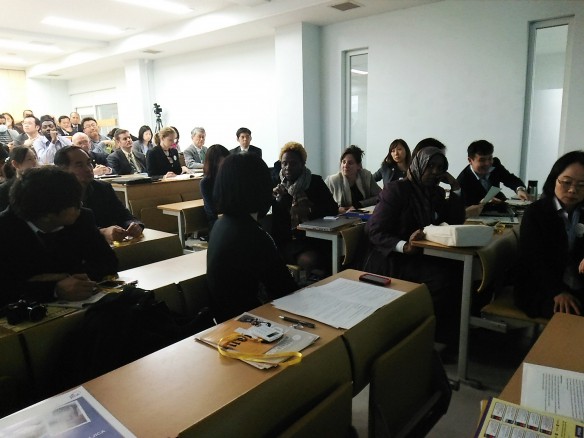
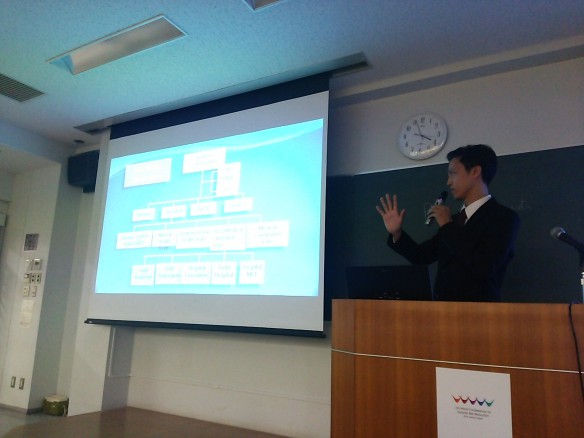
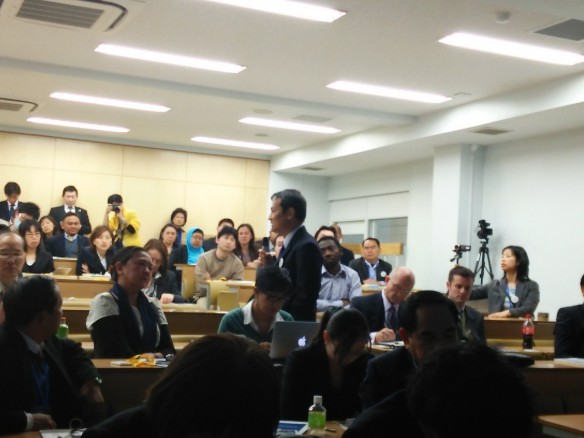

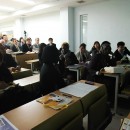
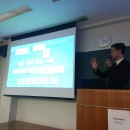
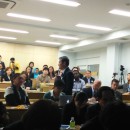

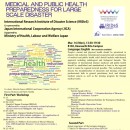 Flyer
Flyer

